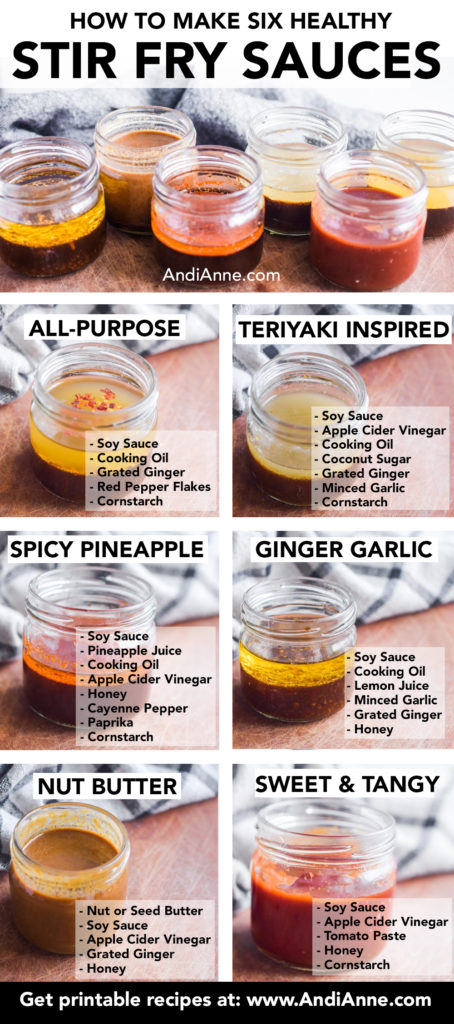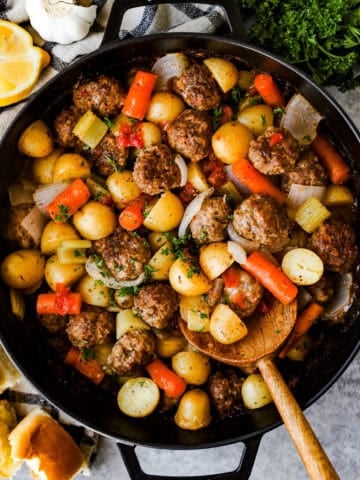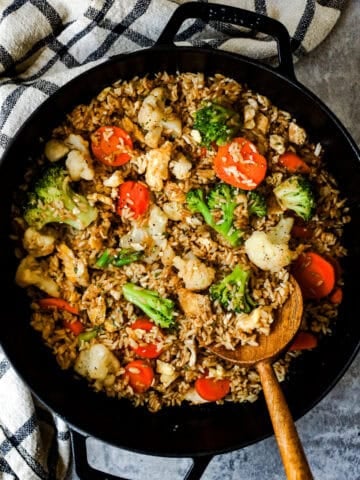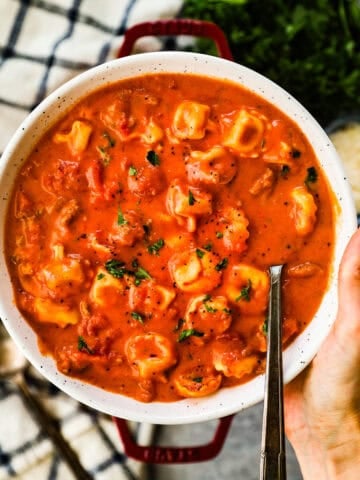Stir fry sauce recipes are a simple way to add incredible flavor to your vegetables, grains and meats. Made with fresh ingredients, these 6 healthy stir fry sauce recipes will add amazing flavor without overpowering your dish. Learn just how easy stir fry sauces are to make, including substitutions, in the recipes below.
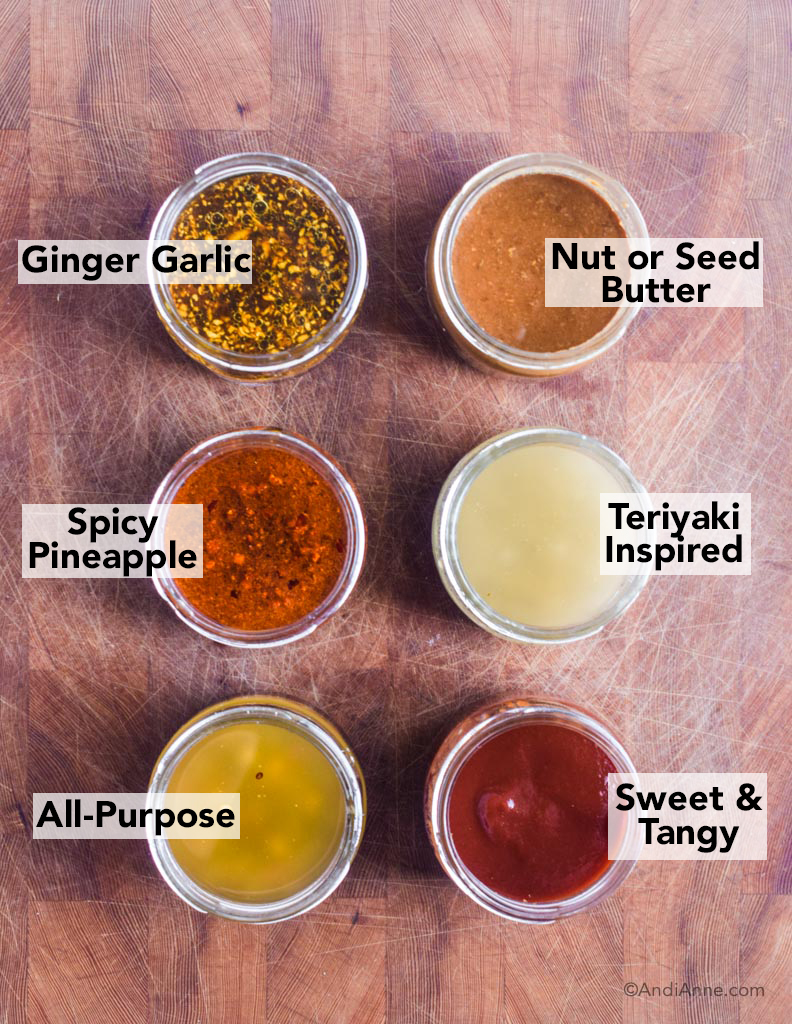
Six Healthy Stir Fry Sauce Recipes To Try
Did you know you can easily make homemade sauces using staples you might already have in your kitchen? It's true! Not only are they more affordable, but they're also fast to whip up and use healthier ingredients.
Whenever I'm at the grocery store I'm always reading the ingredients label before I buy anything. After reading most labels on store-bought sauces I tend to put them back on the shelf. The truth is that most of the storebought sauces contain lower quality ingredients (that maximize profits for the company making it). They are high in sodium, refined sugar and preservatives - not good.
But there's good news! You can easily make your own homemade versions that taste so much better! This post will walk you through 6 different stir fry sauce flavors to try with your own meals. I recommend choosing 2 or 3 and using them on rotation for an easy way to boost flavor to your stir fry.

Stir Fry Sauce Recipe Tips and Tricks:
- Preping The Sauce: These sauce recipes are relatively easy to prepare. I've included as many substitutions as I could think of to make things easier for you. Just scroll to the bottom of this post for the full recipes.
- Storage Tips: I like to dump all my ingredients into a small mason jar, seal the lid and give it a shake. Then I just pour it overtop of the stir fry. If you have extra sauce, it can easily be popped in the fridge (in the mason jar) for another meal. You can store these sauces in the fridge for up to 1 week.
The Secret To Stir Fry
- Start Your Grains First - What will the base of your stir fry be? Will you need to cook rice, quinoa, buckwheat groats or even pasta? (all of these taste great) The base you choose should be cooked first before starting the rest of the meal.
- Wash, prep and chop all the ingredients before you start - Grab all the ingredients you'll need and place them on the counter. This will make the cooking process so much easier. First, prep the stir fry sauce in a bowl or mason jar. Then wash and chop all the vegetables. And last, slice the meat.
- Choose similar veggies - Not all vegetables will cook at the same speed. For example, root vegetables will take longer than soft veggies like tomatoes, onion, and green beans. If using both, start by cooking the root vegables until they're almost soft and then adding in the quick-cooking veggies.
- Slice meat into thin, uniform pieces - It's important to cut all pieces the same size so that they will cook evenly. You don't want some chunks overcooked and tiny pieces overcooked! The thinner the meat, the faster it will cook. For steak, chicken and pork, slice against the grain of the meat. Shrimp and scallops can be left whole.
- If you can, invest into a wok or cast iron pan - A wok is the best tool for stir frys. They retain heat and have a large surface area, making them perfect for cooking stir frys. Cast iron pans also retain heat well and make a great surface for stir frys. But if you're on a budget, use the pan you currently have which will also work just fine.
- Pan should be hot when cooking a stir fry - You'll want to heat the pan with cooking oil for 1-2 minutes before adding the vegetables. This will make the pan the perfect temperature for cooking. I recommend using an oil with a high smoke point like avocado oil.
How To Cook The Best Stir Fry
The secret to cooking the best stir fry is all in the order of cooking. Most people add all the ingredients too soon. Follow the steps below for the perfect flavor combination:
- First, heat a high smoke point cooking oil in the pan over medium heat for 2 mins (I use avocado oil).
- Next add the veggies and cook until they're almost done - stirring occasionally. Pour the veggies into a bowl and set aside for now.
- Add a bit more oil and place the sliced meat in the pan - cook 3 minutes until it begins to brown. Once that happens, add all the veggies back to the pan.
- Now add in the stir fry sauce and mix everything together. Cook an additional 2-3 minutes, then remove.
- Place cooked stir fry in a serving dish or right on top of a bed of rice, quinoa, buckwheat groats etc. Drizzle extra sauce from pan overtop of the meal. Serve and enjoy!
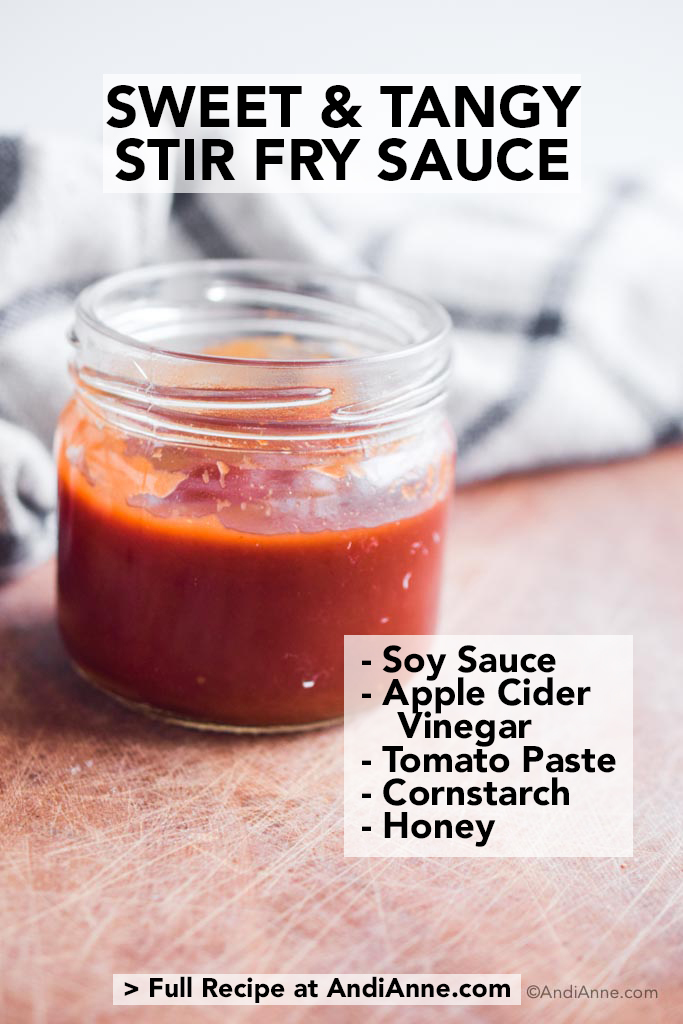
What Ingredients Are In A Stir Fry?
You can add a variety of ingredients to a stir fry, but use the tips above to make sure it all cooks evenly. Here are a few ideas:
- Soft Vegetables: broccoli, asparagus, corn, peas, baby corn, mushrooms, bell pepper, zucchini, tomatoes, etc.
- Hearty Vegetables: carrots, squash (butternut, delicata, pumpkin), rutabaga, beets, turnips, brussels sprouts, etc.
- Meat: you can use steak, pork, chicken, and seafood (shrimp, scallops are both delicious).
- Legumes: chickpeas, lentils, adzuki beans, navy beans, kidney beans, black beans, etc.
- Sauce: There are so many flavor combinations you can try including an all-purpose sauce, ginger garlic, nut butter or seed butter, spicy pineapple, teriyaki-inspired, plus sweet and tangy. Get all those recipes below.
Is Stir Fry Healthy or Not?
It really depends on the ingredients. Many stir fry recipes are loaded with salt and sugar. To make a stir fry healthier, load up on a variety of vegetables (eat the rainbow of colors in your veggies if you can) and make your own stir fry sauce so that you can control the ingredients you add to it.
Here are some healthier tips.
- If you want to use less salt, avoid soy sauce which tends to be high in sodium. Instead, choose coconut aminos in replacement. This sauce is made from the coconut palm and is completely soy-free. This is my personal go-to choice in our home.
- Avoiding corn? Arrowroot powder is a great alternative to cornstarch for thickening your sauces. You can use this in a 1:1 ratio. You can also use tapioca starch in a 1:2 ratio (double the tapioca starch in the recipe).
- Using less sugar - some of these stir fry sauce recipes use sweetener including honey, coconut sugar or maple syrup. You can use less sugar, or none at all if that's what you prefer. Sugar-free alternatives include stevia or xylitol.
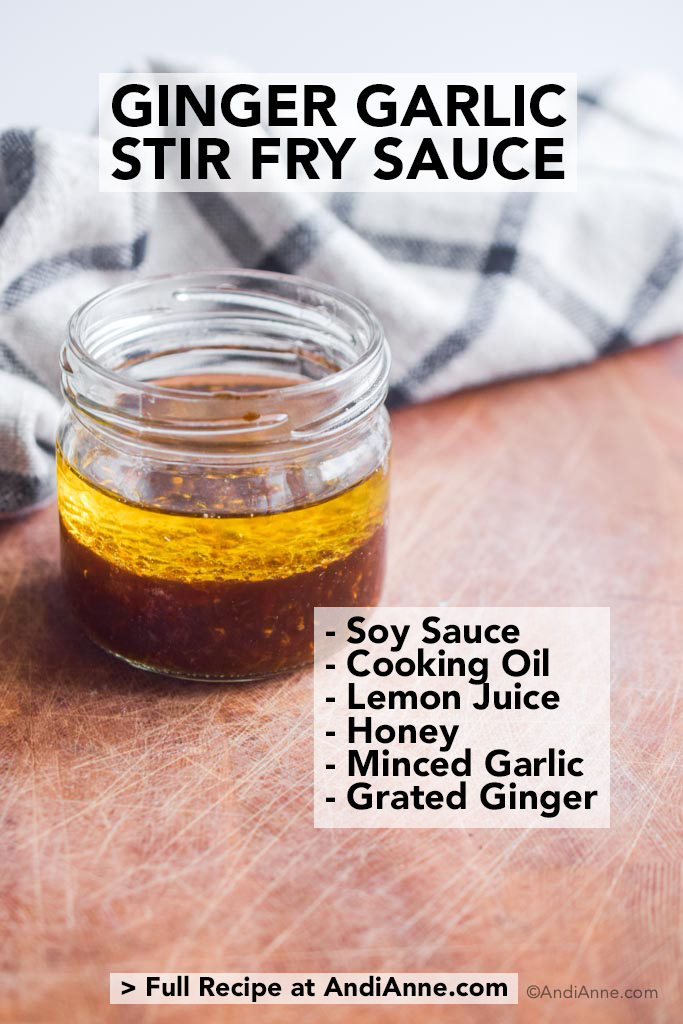
3 Ingredient Stir Fry Sauce
Want to make a simple stir fry sauce with only three ingredients? Try ⅓ cup soy sauce (or coconut aminos), 1 Tbsp cornstarch, and 1-2 Tbsp honey. Mix the soy sauce and cornstarch in a bowl first, then add the honey and mix together. Follow the stir fry instructions above and add this sauce in the last few minutes of cooking.
What To Add To Stir Fry To Make It Taste Better?
The sauce you use will make the biggest difference in flavor. One big mistake that people do with stir fry, is to add all the ingredients, including sauce right away. This will cause certain ingredients to overcook and others to undercook. You want to add the sauce in the last few minutes of cooking to maximize flavors. If you find stir fry to be too salty (like I do) then try using coconut aminos in substitution of soy sauce.

Stir Fry Substitution Ingredients
- Stir Fry Sauce Without Cornstarch - Cornstarch is typically used as a thickener for sauces. If you don't want your sauce to be thick, you can skip it all together. If you want a thicker sauce without the cornstarch, try using arrowroot powder or tapioca starch.
- Stir Fry Sauce Without Soy Sauce - You can substitute soy sauce for coconut aminos. This is made from fermented sap of the coconut palm. It's a salty, savoury sauce that works well in replacement.
- Stir Fry Sauce With Kikkoman Soy Sauce - Kikkoman soy sauce will work great in any of these stir fry sauce recipes. Just scroll down to the bottom of this page for the full recipe list.

More Healthy Sauce Recipes To Try
- Chicken Marinades - Zest up boring chicken breasts with these easy flavor combinations.
- Pork Marinades - These will make your pork chops taste great without overpowering the pork.
- Salmon Marinades - These are easy, healthy and so simple.
- Easy Homemade Salad Dressings - These recipes aren't just great for salads! You can use them in quinoa bowls, on top of roasted veggies, pasta dishes, or even as a marinade on fish or chicken!
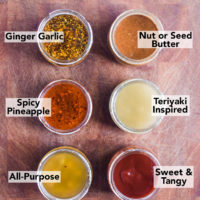
Six Healthy Stir Fry Sauces
Tap Stars To Rate!
Ingredients
All Purpose Stir Fry Sauce:
- ⅓ cup low sodium soy sauce - or coconut aminos
- ¼ cup avocado oil - or other cooking oil
- 1 Tbsp cornstarch - or 1 Tbsp arrowroot powder, or 2 Tbsp tapioca starch
- 2 tsp fresh ginger - grated
- pinch of red pepper flakes
Ginger Garlic Stir Fry Sauce:
- ¼ cup avocado oil - or other cooking oil
- 3 Tbsp soy sauce - or coconut aminos (soy-free alternative)
- ½ freshly squeezed lemon - about 2 Tbsp of lemon juice
- 2 tsp fresh ginger - grated
- 1-2 tsp honey - or maple syrup (optional)
- 1 garlic clove - minced
Nut or Seed Butter Stir Fry Sauce:
- 3 Tbsp nut butter or seed butter - almond butter, sunflower seed butter etc.
- 3 Tbsp soy sauce - or coconut aminos (soy-free alternative)
- 3 Tbsp apple cider vinegar
- 2 tsp fresh ginger - grated
- 1 Tbsp honey - or maple syrup, stevia or xylitol
Spicy Pineapple Stir Fry Sauce:
- 4 Tbsp pineapple juice - note: add the pineapple chunks the the stir fry you make
- 3 Tbsp soy sauce - or coconut aminos (soy-free alternative)
- 2 Tbsp avocado oil - or other cooking oil
- 1 Tbsp honey - or maple syrup
- 1 Tbsp cornstarch - or 1 Tbsp arrowroot powder, or 2 Tbsp tapioca starch
- ½ tsp paprika
- ¼ tsp cayenne pepper
- pinch of red pepper flakes
Teriyaki Inspired Stir Fry Sauce:
- 3 Tbsp soy sauce - or coconut aminos (soy-free alternative)
- 3 Tbsp apple cider vinegar
- 2 Tbsp avocado oil - or other cooking oil
- 1 Tbsp coconut sugar - or brown sugar
- 1 Tbsp cornstarch - or 1 Tbsp arrowroot powder, or 2 Tbsp tapioca starch
- 2 tsp fresh ginger - grated
- 1 garlic clove - minced
Sweet and Spicy Stir Fry Sauce:
- 2 Tbsp apple cider viengar
- 2 Tbsp soy sauce - or coconut aminos (soy-free alternative)
- 3 Tbsp tomato paste
- 1 Tbsp cornstarch - or 1 Tbsp arrowroot powder, or 2 Tbsp tapioca starch
- 1 Tbsp honey - or maple syrup
Instructions
- Start Your Grains First - What will the base of your stir fry be? Will you need to cook rice, quinoa, buckwheat groats or even pasta? The base you choose should be cooked first before starting the rest of the meal.
- Wash, prep and chop all the ingredients before you start - Grab all the ingredients you'll need and place them on the counter. This will make the cooking process so much easier. First, prep the stir fry sauce in a bowl or mason jar. Then wash and chop all the vegetables. And last, slice the meat.
- First, heat a high smoke point cooking oil in the pan over medium heat for 2 mins (I use avocado oil).
- Next add the veggies and cook until they're almost done - stirring occasionally. Pour the veggies into a bowl and set aside for now.
- Add a bit more cooking oil and the meat to the pan - cook 3 minutes until meat starts to brown. Now add all the veggies back to the pan.
- Pour the stir fry sauce overtop. Cook an additional 2-3 minutes.
- Place in a serving dish or right on top of a bed of rice, quinoa, buckwheat groats etc. Drizzle extra sauce from pan on top. Serve and enjoy!
Notes
- Cornstarch Alternatives: For arrowroot powder, use a 1:1 ratio. For Tapioca starch, double the amount required (1:2 ratio for tapioca). T
- Coconut Aminos: If you want a soy-free stir fry with less sodium, try using coconut aminos. Coconut aminos can be used in replacement of any recipe requiring soy sauce.
- Sugar Free: If you want the sauce to be sugar-free, skip the honey/maple syrup. You can use xylitol or stevia instead, or no sweetener at all.
Nutrition info is auto-calculated and meant to be an approximation only.
